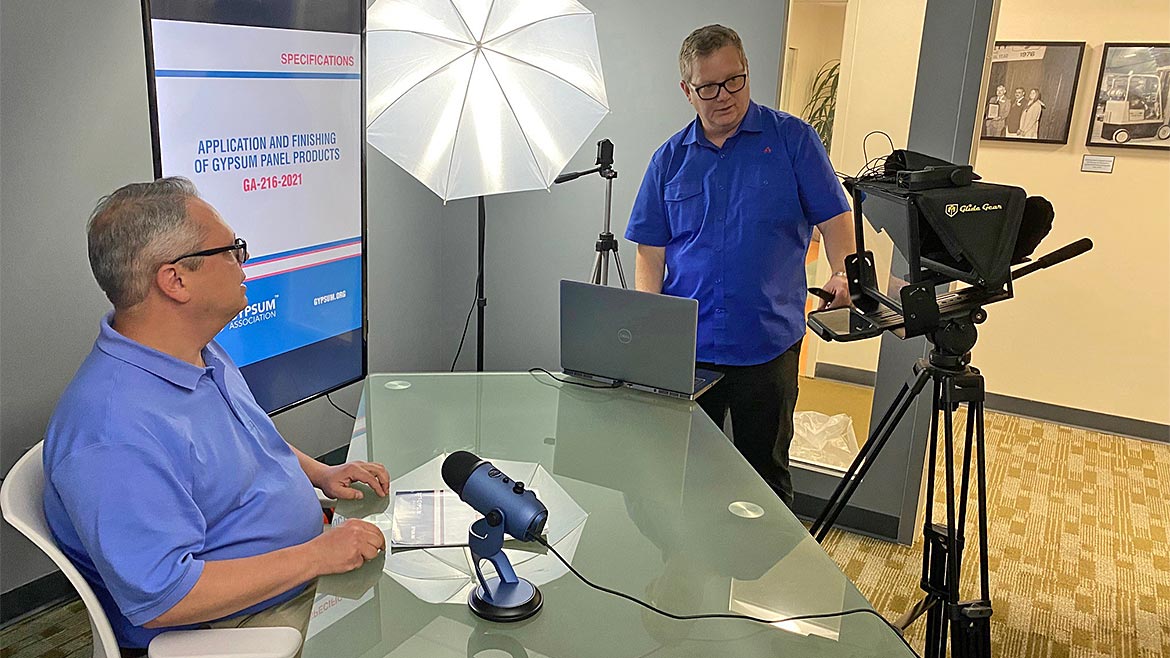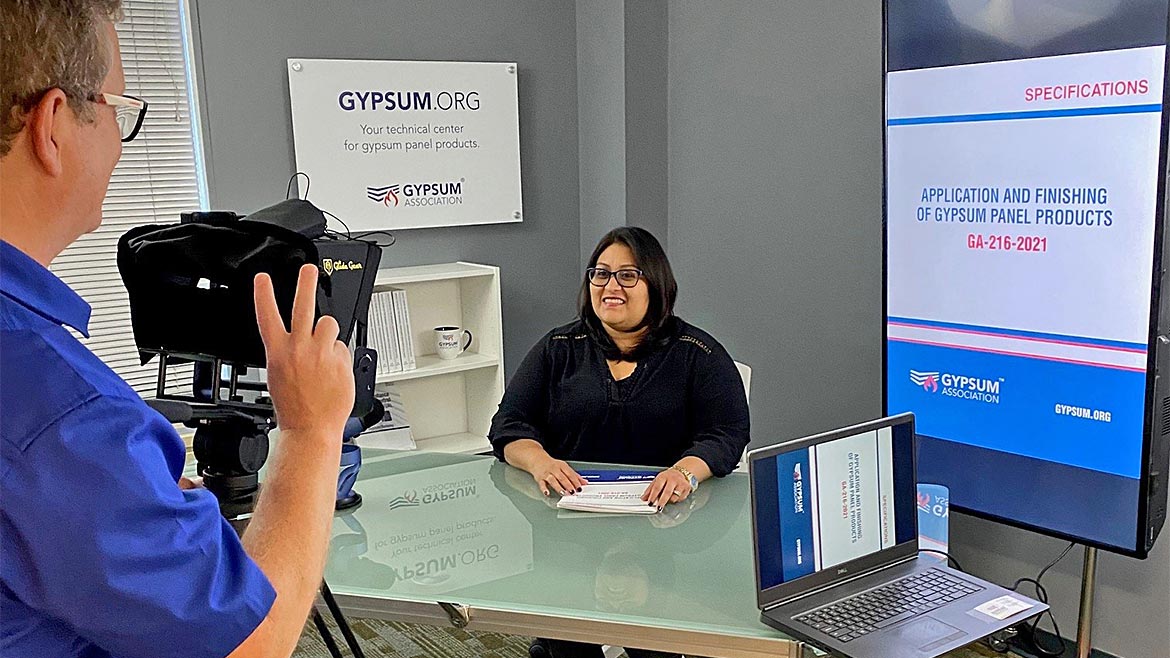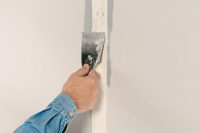For most of my career, I’ve worked in either media production or some aspect of construction. Perhaps surprisingly, these two skill sets have converged in more jobs than might be expected. I acquired carpentry skills at a very young age, working with my father around the house building cabinets, constructing a deck and renovating a bathroom. When I was accepted to New York University’s film school in the early ’90s, I didn’t expect those same skills to provide a path to work in television and film. Yet, after graduation, I consistently found work in the art departments of television and film studios, building and dressing sets.
In the 1990s, the primary media format to shoot short subjects for film classes was 16-millimeter film. Most feature movies were shot in 35 millimeters and sometimes, for very high-quality resolution, 70-millimeter film. Stanley Kubrick’s 2001: A Space Odyssey is a prime example of the use of that larger format. Regardless of format, all film needed to be loaded into a magazine in a dark bag or a dark room. Then, the magazine was mounted back onto the camera. Next, the exposed film needed to be developed — a process that could take a day or two. After waiting a couple days, you could view the fruits of your labor on a film projector or flatbed-editing table. You did not have the luxury of playback at the film location.
Film prevailed because its quality was far superior to the Video Home System video format. VHS, as you may remember, came before the world of DVDs and was an affordable way to document family life back in the ’80s and ’90s. Because VHS was analog, the resolution was limited and the quality of these video recordings did not compare to film or to the new digital media coming on the scene.
I did take several new digital video production classes being offered at NYU at the time. Even then, I could see that with improved video image quality, the world would soon be on the cusp of an industry shift to digital video production. Yet, I still believed 35-millimeter and 70-millimeter film would remain the mainstays for high-quality feature films for decades. I was wrong. Within 10 years, a filmmaker by the name of George Lucas produced a movie called Star Wars Episode II: Attack of the Clones. This was the first major studio film shot primarily on digital video. From 2009 and on, we have had access to smart phones with built-in video cameras and laptop editing studios. Streaming video develops and increases accessibility to digital content for everyone, thanks to platforms like YouTube.

GA’s Historical Videos
When I was onboarded as the Gypsum Association’s technical and market advisor, Steve Meima, our executive director, encouraged me to explore the GA’s YouTube channel. I especially enjoyed watching some of the sponsored films the association produced in the 1950s to promote the use of gypsum wallboard. A favorite, Lathing and Plastering, combines the slapstick hilarity of a DIY homeowner installing gypsum lath with shots of a skilled tradesman making this exacting work look effortless. I also enjoyed the mid-20th century optimism of Shaping the Future with Gypsum Wallboard and the exuberant animation of White Magic, which was shown in Paramount and Warner theaters, federal agencies and schools. I return to the GA’s circa-1990s Miracle Mineral video every now and then. This 15-minute video has withstood the test of time and is the foundation of the GA videos produced today.
As I gained familiarity with the GA’s numerous technical publications, I began to understand how important industry standards are as a means of ensuring people receive quality solutions as well as quality products. Industry standards are incredibly valuable because they are developed over time by seasoned professionals and are consistently reviewed for relevance. However, they can also be difficult to parse. As precise as technical language strives to be, some people are simply more visually oriented.
I know from personal experience that lots of information and insight can be gleaned by watching 10-minute videos on YouTube. From replacing a dishwasher hose to fixing the tailgate latch on your truck, observing how the work is done — once or three or five times — makes it easier and less intimidating. Could the GA do the same thing with its technical documents?

Making New Videos
I began to consider how I might dust off my film school skills and use them to create videos that address some of the questions the GA regularly receives. So many questions are answered by reference to the first 40 or so pages of the GA-600 (Fire Resistance and Sound Control Design Manual). A few short videos could provide a much-needed educational service, especially when it comes to some of our longer documents.
After all, it is one thing to tell a new hire at an architectural firm to sit down and read the first 40 pages of GA-600 and quite another to ask them to spend 10 minutes watching a video. Outlining the content of those pages and explaining how to use it to locate a code-compliant system for fire-rated construction is more efficient. I envisioned a primer to GA-600 that would create general familiarity with the print manual, saving time and aggravation.
Clocking in at a little over nine minutes, the GA’s Guide to GA-600 — 2018 Fire Resistance and Sound Control Design Manual has been viewed well over 2,000 times. A video guide to the 2021 manual was uploaded a year ago and is tracking with the previous version. Since that initial video four years ago, we have used animation to create shorter videos on how to repair a fire-rated system, taken directly from GA-225 (Repair of Fire-Rated Gypsum Panel Product Systems). In addition, we have visualized the process for installing shaftliner panels, per GA-620 (Gypsum Area Separation Firewalls). It is important to emphasize that these videos supplement the published GA standards and are not a replacement for the documents.
Current State of Videos
Today, in addition to answering technical questions, attending industry events and providing education to code officials, I produce the video content that can be found on our website and YouTube channel. Most of the short videos we shoot are referred to as tutorials or video FAQs. With a staff of five, everyone on the team plays a key role in making and producing quality informational videos as an educational resource. Show host, writer, lighting grip, camera operator and director are shared across the GA team. With the technology being so user-friendly, lightweight, compact, accessible and affordable, most of our high quality, live action and educational short videos are produced in-house. We find that editing is the most time-consuming task in video production, and we outsource editing.
Quick answers and quick understanding are what I’m aiming for. We find that videos that are under three minutes really get great traction. We also take into consideration that viewers will access our YouTube channel on devices ranging from a 72-inch widescreen TV to a small cell phone. We try to keep our backgrounds clean and unobstructed so they are not distracting to the publication-based content we are serving up.
Next time you have a question, check out the GA website and YouTube channel.
When the GA established its YouTube channel in 2013, it made sense to delve into our archives and make available a few GA-sponsored films from the 1940s and 1950s. A branch of the film industry that once employed thousands, sponsored films were created for industry associations, like the GA, and companies such as Sherwin-Williams, General Motors and FTD. GA-sponsored films were shown at federal agencies, schools, garden club meetings and all types of architect, engineer and building official gatherings.
A particularly popular film, Lathing and Plastering, has been viewed more than 300,000 times on YouTube. In this video, intrepid DYI homeowner “Handy Andy, a jerk of all trades” briefly skims Lathing and Plastering in One Easy Lesson and gets right to work. Slapstick hilarity ensues. Meanwhile, on another job site, an expert craftsman shows how the work is properly performed.
Many viewers commented on the beautiful work carried out by this skilled plasterer. In fact, the Magnolia Network sought the GA’s permission to use a brief clip from Lathing and Plastering on a recent episode of “First Time Fixer.” Kansas homeowners Alex and Emily, featured on Feb. 17, 2023, were so inspired by the vintage film when restoring their home that the producers wanted to display it. Not able to access Magnolia? Catch some of that action beginning at the one-minute mark of Lathing and Plastering on the GA’s YouTube channel.
References
- https://gypsum.org
- https://gypsum.org/tutorials (GA video tutorials page)
- https://www.youtube.com/@GypsumAssociation (GA YouTube page)
- Lathing and Plastering video (mentioned in article and sidebar.)
- GA’s Guide To GA-600-2021 Fire Resistance and Sound Control Design Manual
- Shaping the Future with Gypsum Wallboard
- GA-225-Repair of Fire-Rated Gypsum Panel Product Systems
- White Magic





Report Abusive Comment